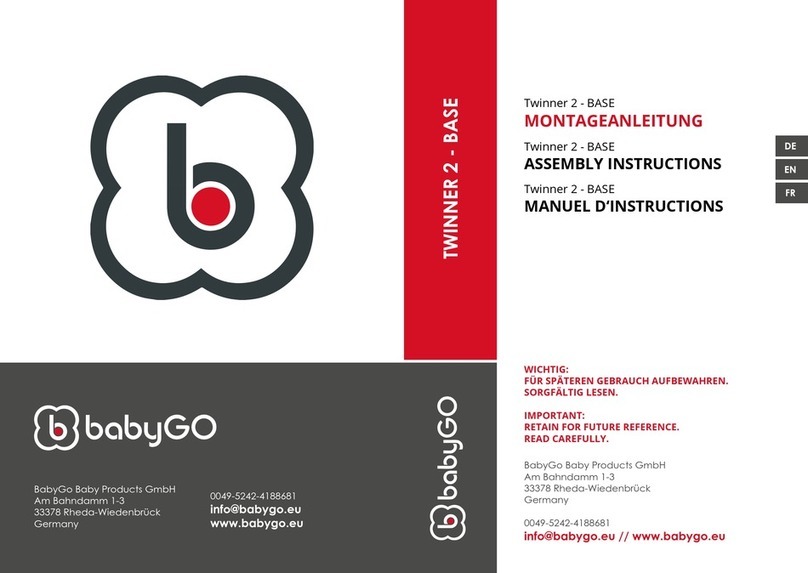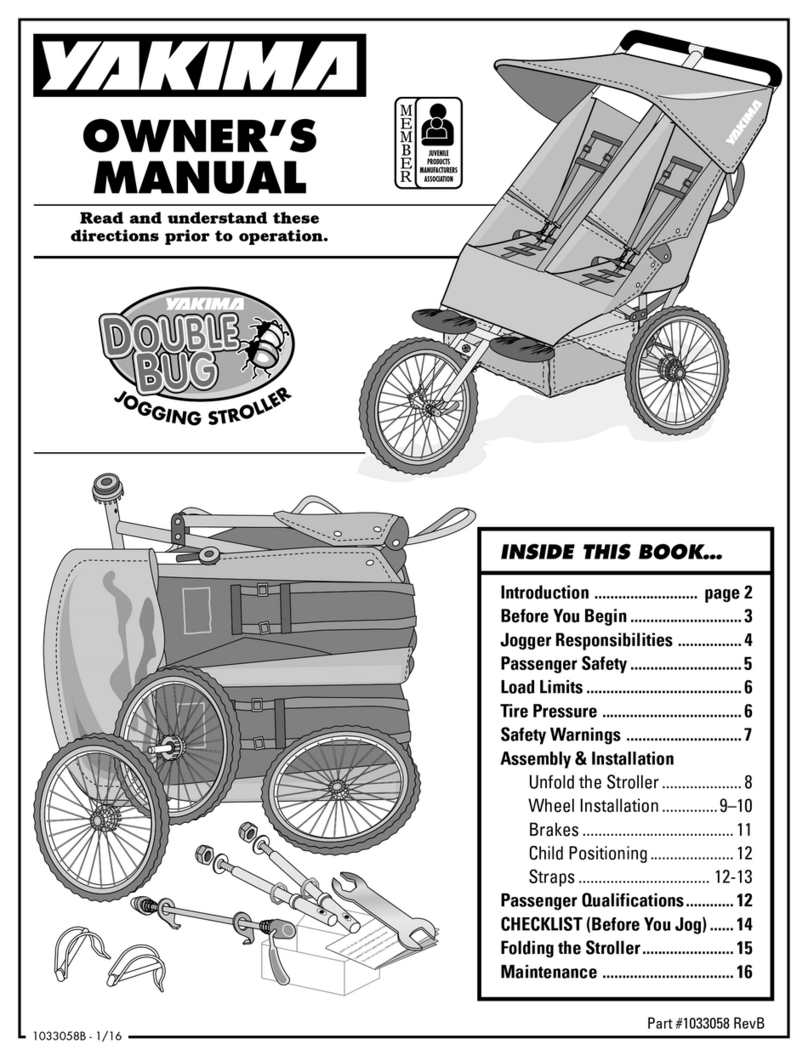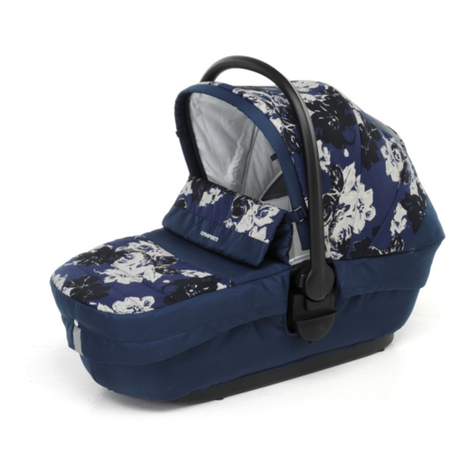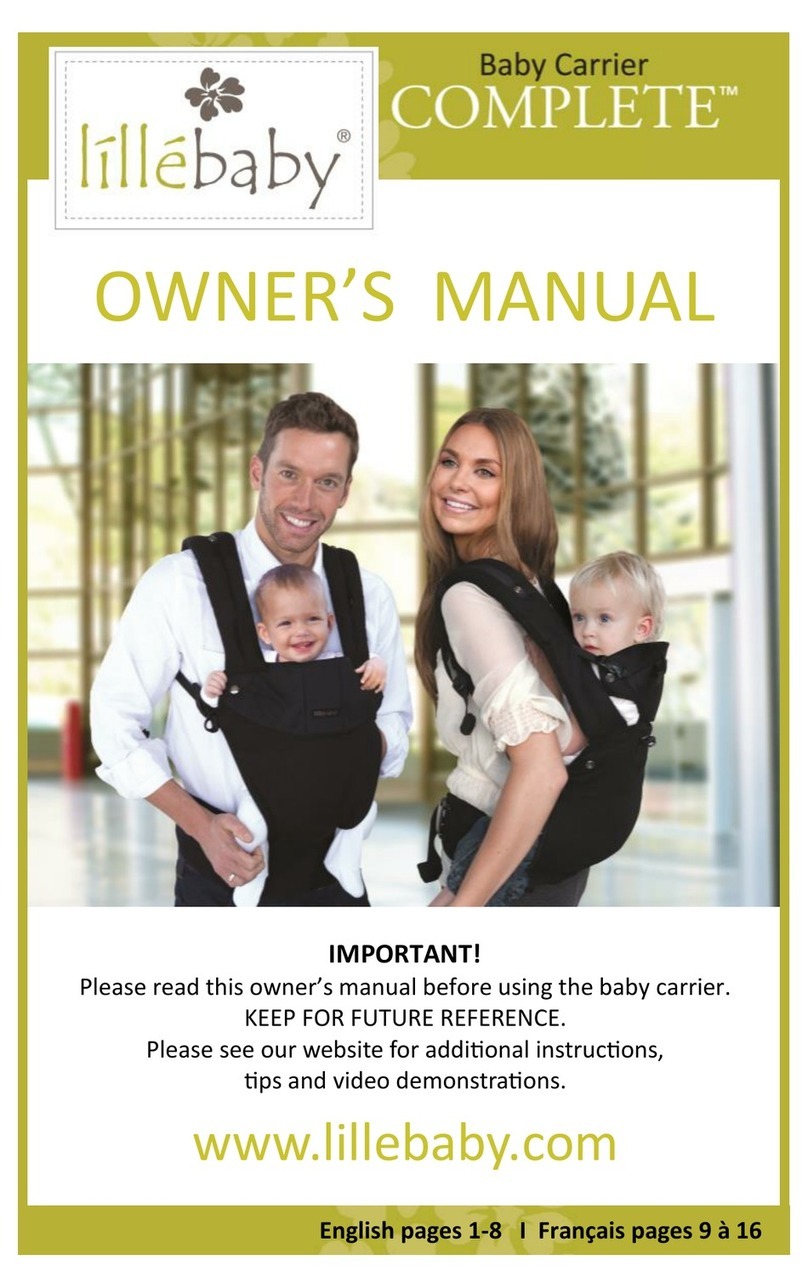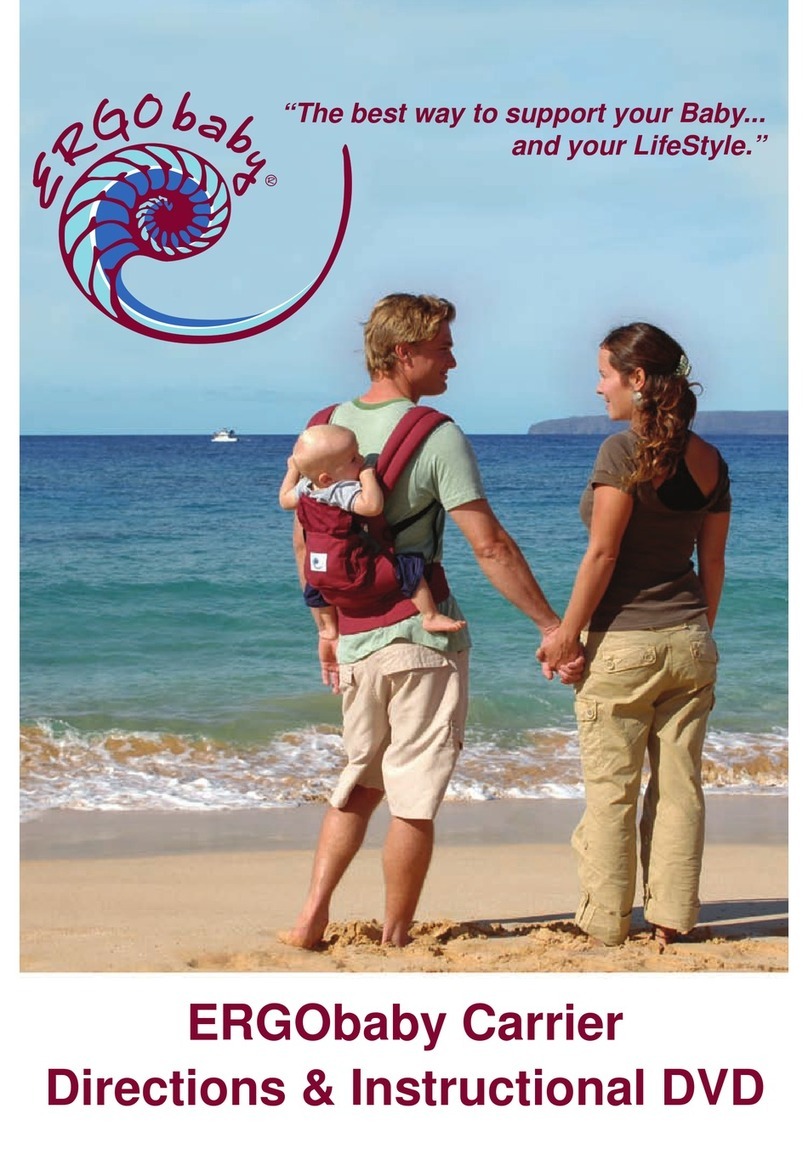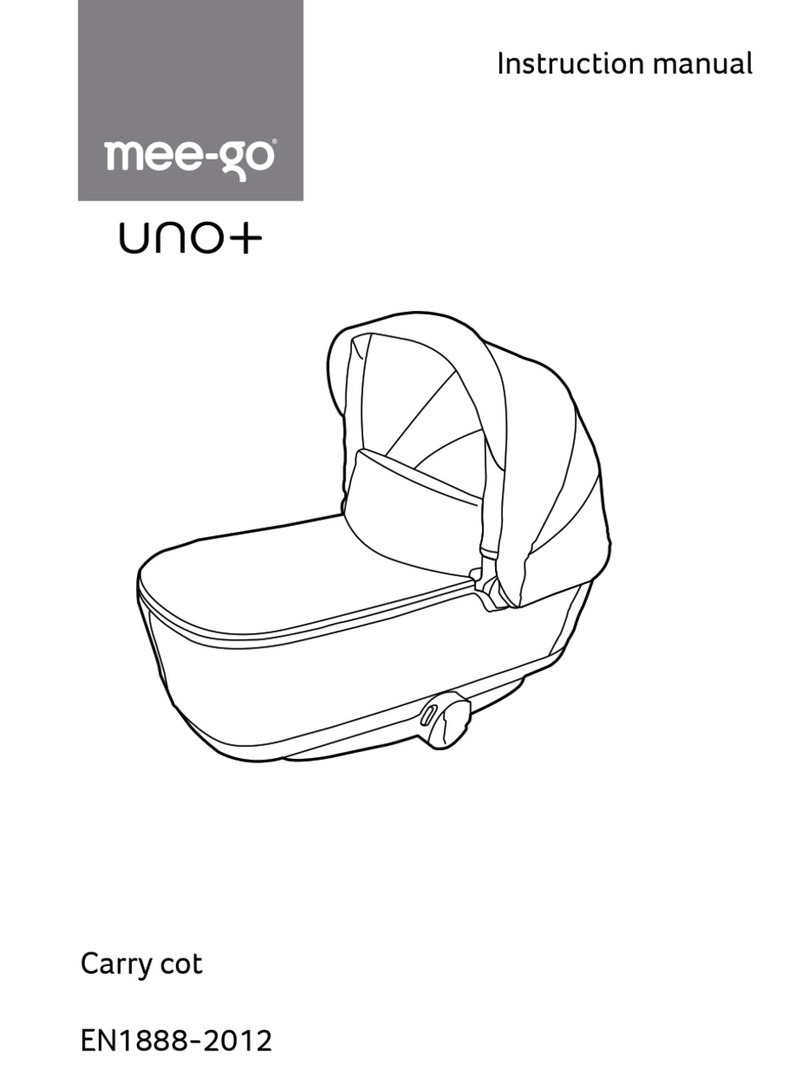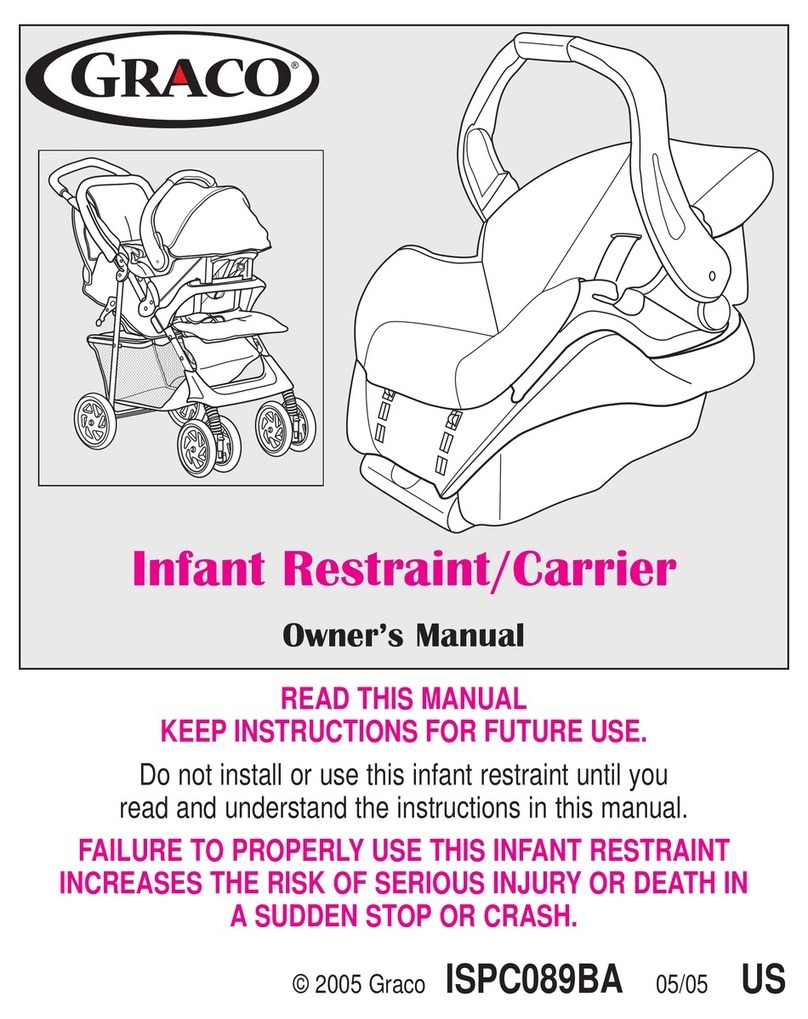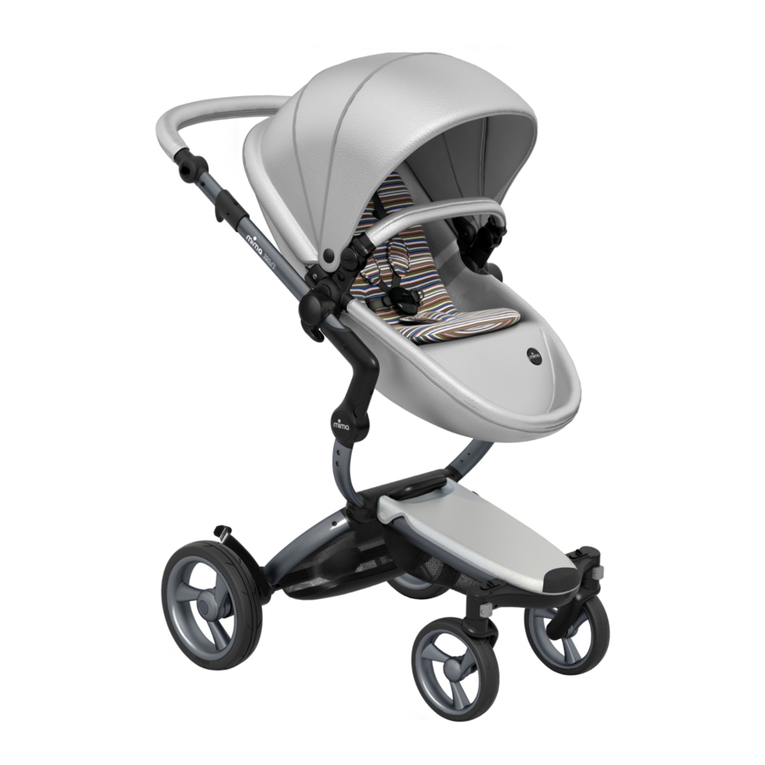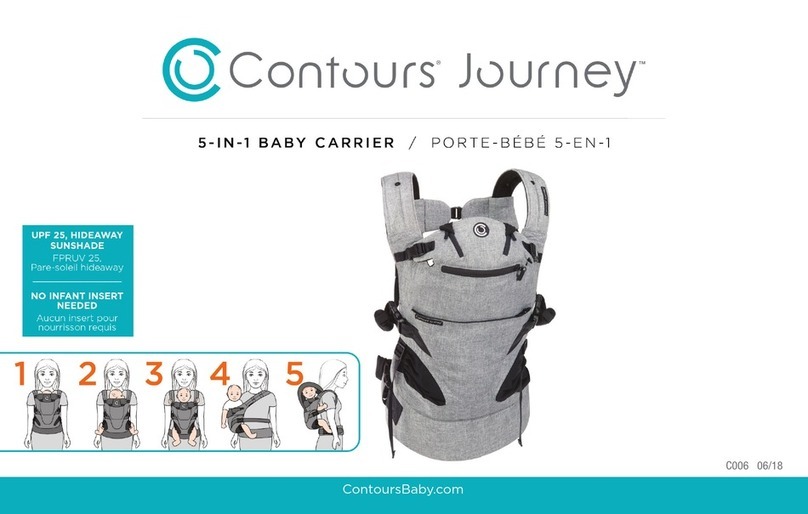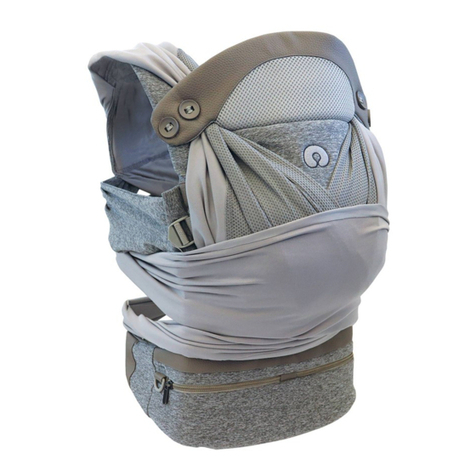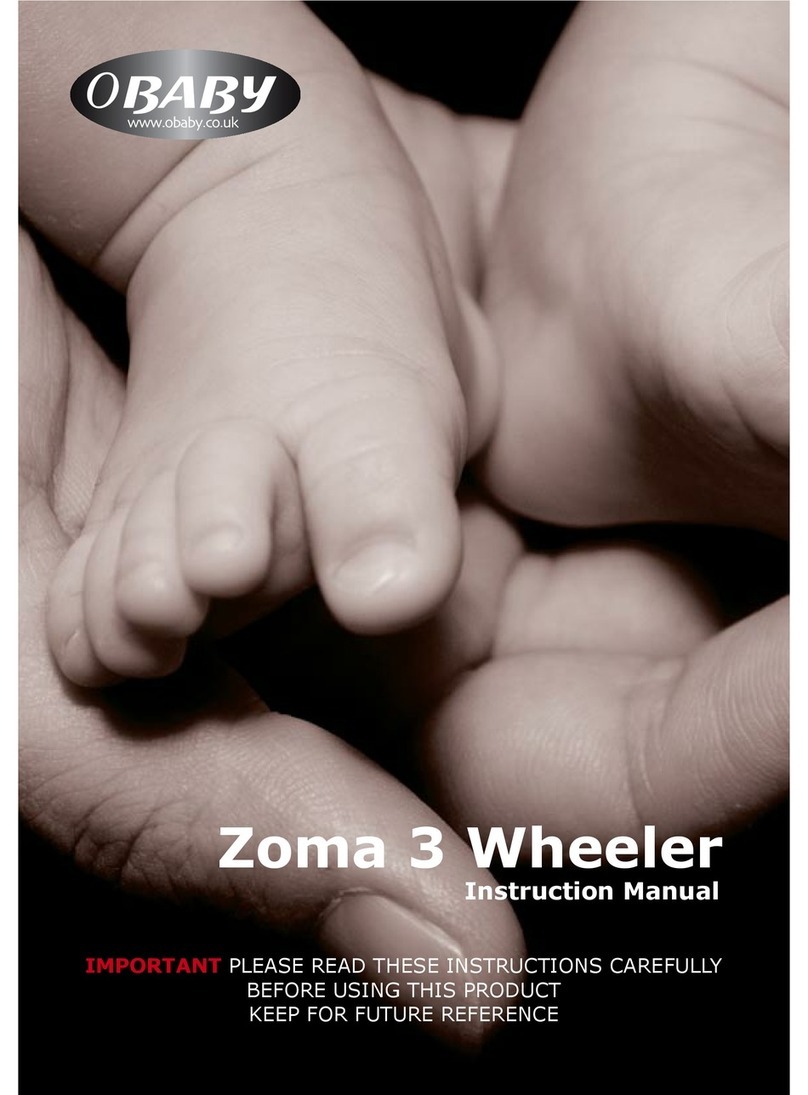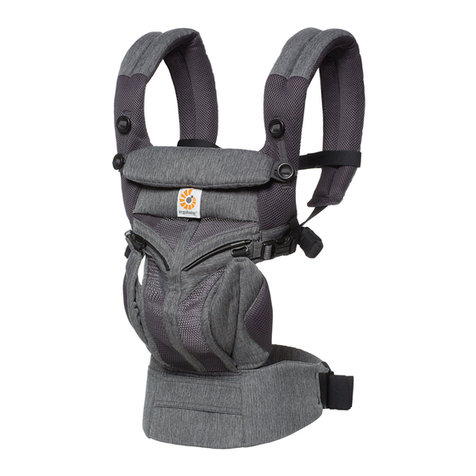IGC Dorel MAXI-Cosi MCM 2010 User manual

Instruction Manual
MCM 2010 Infant Carrier
Illustrations are representative only.
Design and style may vary.
IMPORTANT: KEEP THIS BOOKLET IN THE PLACE
PROVIDED ON THE CHILD RESTRAINT

Before You Start
Thank you for purchasing this child restraint. We
welcome you as a valued customer and trust that
your child will enjoy many years of comfort and safety.
Table of Contents
Page 2 - 4 Warnings (General)
Page 5 - 8 Anchorage fitting installation
Page 9 - 10 Vehicle seat location
Page 11 - 12 Child restraint parts
Page 13 Shoulder height marker rearward facing
Page 14 - 17 Preparing infant seat to fit your child
Page 18 - 19 Securing your child in the child restraint
Page 19 Removing your child in the child restraint
Page 20 Carrier use
Page 21 - 24 Installation of base and seat
Page 25 Storage for tether strap loop section
Page 26 Removing canopy for cleaning
Page 26 Canopy installation and use
Page 27 - 28 Removing seat trim for cleaning
Page 29 Removing buckle for cleaning
Page 30 Care and maintenance
Page 31 Accessories
Page 32 - 33 Tips for base engagement
Page 34 The next seat for your child

• 2 •
IMPORTANT: RETAIN FOR FUTURE REFERENCE
THESE INSTRUCTIONS DETAIL THE SAFE USE, FITMENT AND
MAINTENANCE OF THE SEAT.
PLEASE READ THESE INSTRUCTIONS CAREFULLY AND ENSURE
THAT THEY ARE FOLLOWED AT ALL TIMES.
NO SAFETY SEAT CAN GUARANTEE PROTECTION FROM INJURY
HOWEVER, PROPER USE OF THIS SEAT REDUCES THE RISK OF
SERIOUS INJURY OR DEATH.
Follow the manufacturer’s instructions at all times.
GENERAL
• Use the restraint exactly as shown in the instructions.
• To be used only in a rearward-facing position for an
infant until their shoulders reach the shoulder height
marker (approximately 6 months of age).
Continue to use this infant restraint until the child
reaches this limit. Infants are at risk of serious injury if
they face forward too early.
• Periodically inspect the harness for wear, paying
particular attention to attachment points, stitching and
adjusting devices.
• In an emergency your child can be released quickly by
pressing the red button on the harness buckle.
• In the event of an emergency it is important that the
child can be released quickly. This means that the
buckle is not fully tamperproof and therefore your child
should be persuaded never to play with the buckle.
• To help protect your vehicle seat’s upholstery from
damage, use a seat protector or a towel underneath
and behind child restraint.
• Do not alter or modify this child restraint.
• Do not lubricate buckles and fasteners.
• A loose restraint or harness is dangerous
WARNING

• 3 •
• DO NOT LEAVE CHILDREN UNATTENDED IN THE
CAR.
• Park in the shade or where sun does not directly hit the
child restraint.
• Cover the child restraint with a sheet or blanket when
not in use.
• Check for hot seat and buckles before placing child in
child restraint.
• Check vehicle instructions for more information about
air bag/child restraint use.
• Check the vehicle belt before each use. Use only if the
belt can be tightened properly and securely.
• This child restraint should be securely belted in the
vehicle even when not in use. In a crash or sudden
stop, an unsecured child restraint could injure other
occupants.
• Do not remove any of the warning labels or other
labels on the child restraint.
• Do not use this child restraint without the seat trim.
• Fit the restraint firmly to the car seat.
• Fit the harness firmly to the child.
• Do not allow the restraint to come into contact with
polishes, oils, bleach and other chemicals.
• Luggage and other heavy objects should be secured in
the car. Loose objects are liable to cause injury in the
event of an accident.
• THIS RESTRAINT IS NOT SUITABLE FOR USE
WHERE THE ANCHORAGE STRAP MAY FALL INTO
A SPLIT IN THE SEAT BACK (E.G. HATCHBACK OR
WAGON).
WARNING

• 4 •
• Straps may be damaged by unsecured cargo in a
collision. Secure or remove hazardous cargo before
using this strap. Hatch-back or wagon: Do not use the
child restraint where this strap may fall into a split in
the seat back. Always attach hook and remove slack.
• Repairs must only be done by the manufacturer or agent.
• Destroy the restraint if it has been in a severe crash,
even if no damage is visible.
• To ensure baby’s back is evenly supported, do not put
more than one nappy on the baby and make sure the
nappy is not thickly folded at the back.
• DO NOT USE A REAR-FACING CHILD RESTRAINT
WHERE AN AIRBAG IS FITTED IN FRONT OF THE
SEATING POSITION.
• THIS RESTRAINT MUST BE ATTACHED TO A CHILD
RESTRAINT ANCHORAGE POINT IN THE CAR.
REFER TO CAR OWNER’S HANDBOOK FOR
LOCATION OF ANCHORAGE POINTS. REFER TO
A CHILD RESTRAINT FITTING STATION IF NO
ANCHORAGE POINTS ARE IN THE MOTOR CAR.
• Supervision of children is needed because they may
be able to undo buckles.
• Care and attention be given to ventilation and shading
of the occupant.
• TO BE USED WITH A LAP-SASH/LAP-ONLY* SEAT
BELT IN THE FRONT/BACK* OF MOST CARS WITH
FORWARD-FACING SEATS
• Seat belt extenders should not be used if the seat belt
is not long enough to secure the child restraint.
• If the baby’s neck muscles are unable to support their
head, then the child should remain rear facing.
WARNING

• 5 •
ANCHORAGE FITTING INSTALLATION
Read and follow all of the installation instructions for
maximum protection. If you have any questions
regarding the installation or use of this restraint, please
contact IGC Dorel or agent, or a child restraint fitting
station authorised by the relevant transport authority,
or in New Zealand, to consult the agent for the vehicle.
THIS RESTRAINT MUST BE USED IN CARS WITH
FORWARD FACING SEATS WITH A LAP-SASH SEAT
BELT OR LAP BELT.
Do not modify or alter this restraint in any way. Use
only IGC Dorel recommended parts and accessories.
Protect all webbing from possible damage by sharp
edges and corners.
Check your vehicle owner’s handbook for the location
of correct anchorage points and possible need for
spacers. If a suitable anchorage point cannot be found,
contact a child restraint fitting station for recommendations
about your vehicle.
Some vehicles may have anchor points which are
recessed below the vehicle trim, spacers are supplied
to raise the anchor point if required.
Extension straps and extra fittings are available from
various stores.
WARNING

ANCHORAGES IN VERTICAL PANEL AT REAR OF VEHICLE
FLOOR MOUNTED ANCHORAGES
• 6 •
IMPORTANT
Child restraints must be used correctly to provide proper
protection for your child. The new type of clip anchorage
system on child restraint must be used in the correct
way.
Be especially careful to use the clip in the following way.
RIGHT
Make sure there is no slack in the top strap and the
attachment clip is upright in the anchorage fitting.
WRONG
The clip must not lie flat on the anchorage fitting.

• 7 •
ANCHORAGE FITTING INSTALLATION
If the car is fitted with a child restraint anchorage point.
Locate the anchorage points behind the rear seating
position (consult the car owner’s handbook for the
location of the anchorage point). Remove the thread
plug from the parcel shelf / floor/ roof and install the
attachment bolt as shown in Fig 1.
If the car is not fitted with a child restraint anchorage
point.
For sedans only – Drill a 9mm diameter hole in the
parcel shelf on the centre – line of the seating position
as shown in Fig 2. Install the anchor bolt as shown in
Fig 3.
For vehicles other than sedans – In Australia, consult
your nearest child restraint fitting station or traffic
authority for vehicle inspection to find the best, correct
position for the placement of anchorage point, and for
the correct attachment bolt length and use of spacers.
In New Zealand, consult the agent for the vehicle.
CAUTION: DO NOT OVERTIGHTEN THE
ATTACHMENT BOLT. MAXIMUM TORQUE 20 Newton
Metre.
Attachment bolt
Lock Washer
Anchor Fitting
Spacers (if required)
Vehicle Trim
Vehicle Metal Structure
Fig 1
Front of vehicle
WARNING

• 8 •
WARNING: CHILD RESTRAINTS MUST NOT BE
ATTACHED TO UNSOUND METAL OR TO WOOD OR
SYNTHETIC STRUCTURES. WHEN DRILLING THE
9MM HOLE DO NOT DRILL THROUGH FUEL LINES,
FUEL TANKS, ELECTRICAL WIRING, OR RADIO
SPEAKERS. WEBBING STRAPS MUST BE
PROTECTED FROM SHARP CORNERS AND EDGES.
THE ANCHOR FITTINGS MUST BE USED ONLY AS
DESCRIBED ABOVE. IT MUST NOT BE HOOKED
ONTO ANY OTHER OBJECT.
Front of vehicle
Fig 2
Front of vehicle
Centre-line of seating
position
Anchor Fitting
Spacers (if required)
Vehicle Trim
Lock Washer
Securing Nut
Reinforcing Washer
Vehicle Metal
Structure
Attachment bolt
Fig 3

• 9 •
VEHICLE SEAT LOCATION
IMPROPER PLACEMENT OF THE SAFETY SEAT
INCREASES THE RISK OF SERIOUS INJURY OR
DEATH.
Some seating positions in your vehicle may NOT be
safe for this safety seat. Some vehicles do not have any
seating positions that can be used safely with the seat.
If you are not sure where to place the infant seat in your
vehicle, consult your vehicle’s owner’s handbook.
Vehicle Seat Location Requirements
Children are safer when properly restrained in rear
vehicle seating positions. Whenever possible, secure
the infant seat in the centre position of the seat
directly behind the front seats.
410mm
610mm
Check the measurements between the front & rear
seats in the car in which the child restraint is intended
to be used, to ensure that the space is adequate.
WARNING
Front of vehicle

• 10 •
CORRECT VEHICLE POSITION
CORRECT USE
CORRECT USE
INCORRECT USE
ANGLE CONFIGURATION FOR SEAT
40˚
Position seat ensuring that the
angle is no greater than 40˚
from horizontal plane.
Angular adjustment is achieved
by adjusting the base. Make
sure the line indicator is level
to ground. see pg 23 - 24
illustration 7 - 8

• 11 •
CHILD RESTRAINT PARTS
FRONT
A. Air Protect Cells
B. Canopy
C. Head Hugger
D. Shoulder Pads
E. Harness Straps
F. Buckle
G. Harness Release
Lever (under flap)
H. Harness Adjuster
Strap
I. Base
J. Stabilising bar
K. Carrying Handle
K
B
C
D
E
F
G
A
H
J
I

• 12 •
L. Handle Adjustment
Button (Both sides)
M. Tether Strap
N. Tether loop section
O. Base Adjustment
Lever (3 positions)
P. Seat Release
Lever
Q. Bracket
R. Anchor Fitting
S. Adjuster latch
T. Locking Clip
(Located on the back
of the seat)
U. Instruction
Manual Storage
(on back of shell)
style and design may vary
BACK
L
T
Q
P
O
S
R
N
U
DO NOT REMOVE
TETHER STRAP
Rearward - Facing
belt path
M

• 13 •
Shoulder height marker rearward facing
Shoulder strap:
The shoulder straps
must be in the slots
which are nearest to
the child’s shoulders,
but not lower than the
child’s shoulders.
Shoulder
strap
SHOULDERS MUST BE
BELOW THIS LINE
LABEL 1
LABEL 1

• 14 •
You MUST make these adjustments with your child
before you install the child restraint in the vehicle.
Preparing Infant seat to Fit Your Child
TO ADJUST HARNESS:
To loosen:
• Press and hold down the harness
release lever (under flap on the front
of Infant seat)
• Pull both harness shoulder
belts simultaneously towards you.
• Press red button to release buckle
assembly for ease of child fitment. Place child in seat.
To tighten:
• Fasten buckle assembly. Pull the harness adjuster
strap at the front of the seat until the harness strap lies
firmly against the child.
• Pull back the trim below the adjuster to expose the
plastic hook at the front seat. Thread the adjuster belt
loop onto the hook for storage and safety. Refer to
illustrations below.
1
2
3
4
5
3
Press red button to release the
buckle assembly. Place harness
straps over sides of infant seat.
Configuring the harness belt
for shoulder height.
4

• 15 •
Check Harness
Height:
Determine which set
of harness slots works
best for your child.
Adjust if needed.
Place the child’s bottom
and back flat against the
child restraint. This will
increase comfort and
allow the harness to
properly tighten.
2
3
Shoulder strap:
The shoulder straps must be in the slots which are
nearest to the child’s shoulders, but not lower than
the child’s shoulders.
4

• 16 •
If adjustment is
required, locate
splitter plate at rear
of seat.
5
Remove harness straps
from splitter plate at rear
of seat.
Pull harness through the
harness slots from the
front. Rethread harness
into new harness guide
locations.
Do not use shoulder
straps of unequal
heights. Straps must
be threaded through the same slot level for the trim
and seat.
Splitter plate
6
7

• 17 •
Make sure harness
straps are between
the metal bars and
plastic shell. Refer
to illustration 9.
Refit harness to
splitter plate.
Make sure harness
is securely on and
there are no twists.
8
9
WARNING

• 18 •
Position harness
straps over the
child’s shoulders.
Push buckle tongues
into buckle until you
hear a “click.” Pull up
on harness to make
sure buckle is locked.
1
2
Securing Your Child in the Child
Restraint
Pull on harness
adjustment strap
to tighten harness
snugly.
NOTE: A snug strap
should not allow any
slack. It lies in a
relatively straight line
without sagging. It does
3
not press on the child’s flesh or push the child’s body
into an unnatural position.

The end of the harness
adjustment strap has
a loop. Slide one side of
the loop onto one tab and the other on the other tab.
Replace the pad over the front
of the shell.
Adjustment
Shell:
4
Attaching
Adjustment Strap
End to Shell:
Pull up the trim at
the front of the seat.
Press and hold down the
harness release lever
(under flap on the front
of Infant seat). Pull both
harness shoulder belts
simultaneously towards
you.
1
Removing Your Child from the Child
Restraint
Release harness by
pressing red button
on buckle. Remove
child.
• 19 •
2
Table of contents
